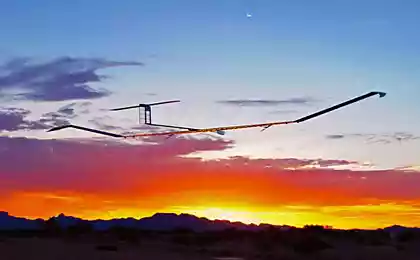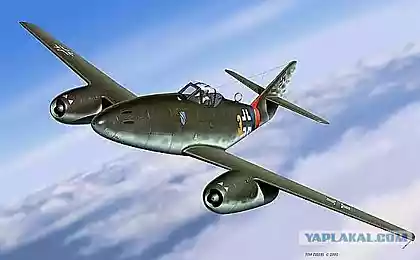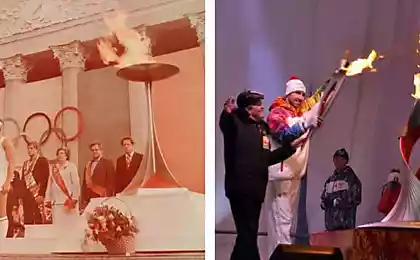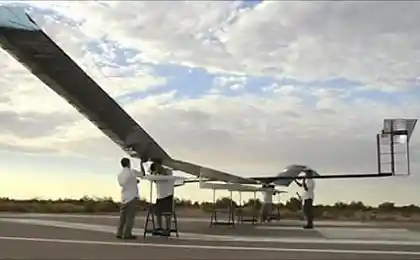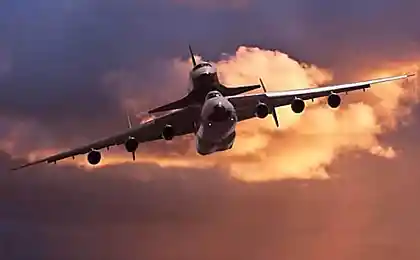1073
Drone Solar Zephyr-7 stayed in the air for 11 days in winter conditions

We are talking about non-stop flights in aircraft Zephyr-7 in winter in the southern hemisphere (where it tested the device, developers are not reported). True, he was flying at an altitude of 21 kilometers, so that the impact of weather conditions on the aircraft was minimal. Nevertheless, the plane once again showed its own reliability in long flights without stopovers.
Zephyr-7 - a fairly large aircraft with a wingspan of 23 meters and a payload mass of more than 50 kilograms. It is worth noting that the "solar plane" is referred to as a high-altitude pseudolite (High Altitude Pseudo-Satellite, HAPS), precisely because of its capacity to remain in a pair of tens of kilometers above the surface for many days.
UAV Zephyr-7 was first equipped with satellite communication system to nazmenye operators can control the location of the drone, after he went out of sight of ground observers. Tests of "solar" aircraft led to the need to involve several British military organizations involved in the control of air space and aviation, so the aircraft was assigned to the military and the registration number: PS001. According to the developers, Zephyr-7 - the first pseudolite, which received a number.
Among other things, the project is partly financed by another military organization: Ministry of Defence of the United Kingdom. Yes, and established the UAV, as far as can be judged, for the military. Anyway, the project worked defense company QinetiQ (also from the UK). It is therefore now available not many technical details about the project. But such information is in respect of the predecessors' Zephyr »,
Last year the company bought the Airbus project at QinetiQ. The purpose of this project - to demonstrate the possibility of pseudolites, which are positioned as an inexpensive tool for monitoring and communications.
To recharge the batteries aircraft uses solar panels placed on the wings, which accumulate enough energy to all systems worked and at night. Earlier Zephyr-7 and its predecessors tested under milder conditions , in the summer with the longest day and shortest night (and milder weather conditions), so that the current tests have become really serious test for the "sun" of the aircraft.
Via defensenews
Source: habrahabr.ru/post/234981/
Intel introduced the first 8-core processor for desktop computers
Hotel Marina Bay Sands in Singapore


